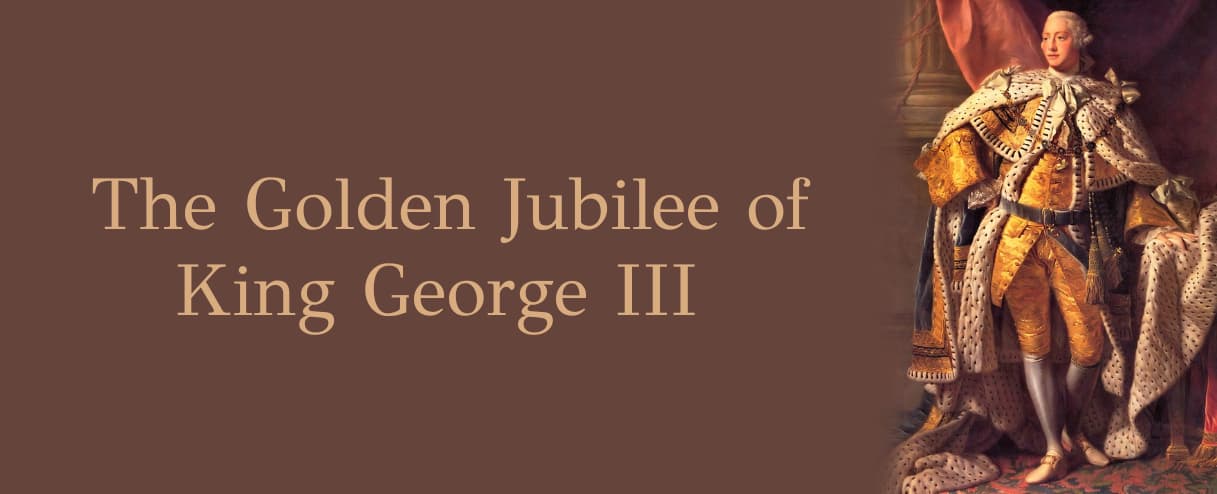
On 25th October 1809, George III became the first British monarch to celebrate a Golden Jubilee, marking the 49th anniversary of his accession and his entrance into the 50th year of his reign.
King George III was the first British monarch to mark a jubilee in a significant way, and the preparations for his Golden Jubilee were not too different from the jubilee celebrations of today.
The celebrations for this jubilee, also known as the Grand National Jubilee, commenced in the United Kingdom with a ball at the Town Hall on the 24th October. The next day, a private service took place at St George’s Chapel, Windsor Castle, where the King, Queen, the Duke of York, Princess Elizabeth, and the Duke of Sussex were in attendance. Although the King could not take part in most of the celebrations due to his declining health, he did inspect a troop of soldiers at the chapel.
An ox roast was held for the King in Bachelors’ Acre, Windsor, organised by the Royal Horse Guards. The Queen, Princess Elizabeth, the Duke of York, the Duke of Kent, the Duke of Cumberland, the Duke of Sussex, the Prince of Wales and Princess Charlotte of Wales all accompanied each other for this roast. A grand ornate arch had also been built by the Guildhall which the Royal Family passed through as they entered the town.
The festivities continued with a grand fête and firework display at Frogmore organised by the Queen. In attendance of this event were the Duke of York, Duke of Clarence, Duke of Sussex, Princess Augusta, Princess Elizabeth and Princess Sophia, as well as other important figures. Shops and businesses were closed so that the public could participate in these celebrations. There was a procession to St Paul’s Cathedral in which the Lord Mayor of London and the City of London Corporation took part. This lead to a service of thanksgiving and a dinner at the Mansion House.
During the celebrations, debtors were discharged, and military deserters and prisoners of war were pardoned. A monument was also erected in Windsor to mark the occasion, which was unveiled in the presence of the Queen. Other landmarks that were commissioned include the King’s statue in Weymouth, the Jubilee Rock in Blisland, and the Jubilee Tower in Moel Famau. Two sets of medals were struck to mark the Golden Jubilee; the King George III Jubilee Medal and the King George III and Queen Charlotte Jubilee Medal.
Celebrations for this jubilee also commenced outside the United Kingdom. The festivities began in India on the King’s official birthday; 4th June in which the governor threw a fête in Bombay that was attended by Indian Empire ambassadors and those from surrounding countries.
Each coin in this new series features a great British monarch from the past and records one of their great regnal milestones: for example, the half sovereign features our longest reigning king; George III, and celebrates his Golden Jubilee. Secure yours HERE.


